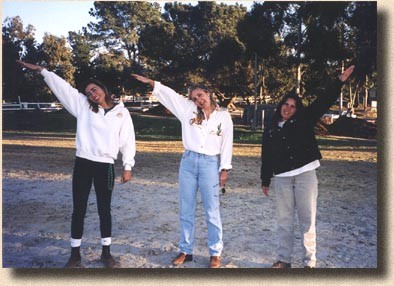













|
Edu-K brings together and simplifies the most innovative and effective concepts developed in education in the past 50 years. It is recognized as one of twelve innovative interventions for the 90's by the National Learning Foundation.
BG, our basic program, uses simple movements to integrate the whole brain for specific learning skills. These experiences are effective because they parallel the child's first method of coding experience for vision, language, and large and small motor skills. When action originates from whole brain balance, the individual's natural learning abilities are revitalized. Performance becomes easy and effortless.
Paul Dennison, Ph.D., the creator of Educational Kinesiology, took these movements into his learning disabilities clinics, and simplified them, discovered why the movement hadn't worked for some people, and developed techniques that make them effective for everyone. This new field is Educational Kinesiology and the new movements are called Brain Gym movements.
To explain how Edu-K works, Dr. Dennison describes brain functioning in terms of three dimensions: Laterality, Focus, and Centering.* Normal brain function requires efficient communication between the many nuclei or functional centers located throughout the brain. Learning and functional disabilities occur when information cannot flow freely between these centers of the brain. The Brain Gym movements stimulate this flow of information within the brain, restoring our innate ability to learn and function at top efficiency.
LATERALITY is the ability to coordinate one side of the brain with the other, especially in the midfield. This skill is fundamental to the ability to read, write and communicate. It is also essential for fluid whole body movements, and for the ability to move and think at the same time.
FOCUS is the ability to coordinate the back and front parts of the brain. It is related to participation and comprehension, the ability to act on the details of a situation while keeping a perspective of the self, and for understanding new information in the context of all previous experience. People with out this skill are said to have attention disorders and an inability to comprehend.
CENTERING is the ability to coordinate the top and bottom parts of the brain. This skill is related to feeling and expressing emotions, responding clearly without emotional overlay, safety, relaxation, grounding and organization.
The Brain Gym movements integrate the brain in these dimensions, allowing information to flow easily from the senses into memory and out again. One is able to learn with less stress and to express creativity using more of one's mental and physical potential. The movements are also effective in clearing emotional stress from the system.
The Brain Gym movements are enjoyed in classrooms and work sites to integrate the brain before learning, work, or sports activities. More focused results are obtained in private consultations by setting a goal for a specific activity, doing the BG movements to integrate the brain for this activity, and then re-doing the activity to confirm that the new learning has occurred. Results are evident immediately and are cumulative.
*There are actually 7 dimensions, but BG only deals with the 3 major ones. Edu-K in Depth explores the remaining 4 dimensions.

1. PHYSICAL MOVEMENT STIMULATES BRAIN FUNCTION
Specific body movements simulate particular aspects of brain function. An example is "Dennison Laterality Repatterning", which achieves neurological intergration between the vestibular system, the gross-motor movements of the cerebellum and the basal ganglia, as well as equal activation of the left and right hemispheres of the neocortex- particularly the sensory cortex of the parietal and motor cortex of the frontal lobes. The 26 Brain Gym movements are designed to activate different cognitive functions, including communication, comprehension, and organization.
2. STRESS INHIBITS LEARNING
Under stress, activity in the mind/body system is centered in the sympathetic nervous system, which prepares the body for fight/flight (aggression/fear) reaction. As a result, activity in the limbic system, where memory occurs, and in the neocortex of the cerebrum, where abstract thinking and reasoning take place, is minimized.
3. LEARNING BLOCKS CAN BE RELEASED BY BRAIN GYM
Learning blocks can be general or specific to particular information, subjects, aspects of subjects. We are all learning-blocked to some extent, having 'switched off' maximum cognitive functioning for certain tasks.
4. NOTICING IS A PERSONAL FEEDBACK MECHANISM
All new learning depends on the ability to notice what works and what doesn't in the mastery of the skill addressed. When the learner is able to become aware of various learning blocks, and to take action through effective tools (such as Brain Gym) that improve performance, self-esteem is heightened. The tools gained through the Brain Gym process show the learner how to interact with and control his or her response to the learning environment.
|
| ||
|
| ||
|
|